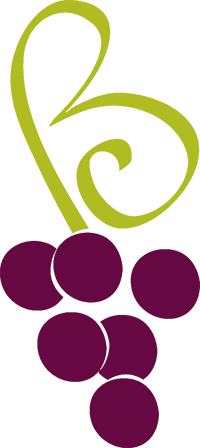- Mâcon, Burgundy, France
The Thevenet family’s wines were one of Joe Dressner's and Denyse Louis's first imports: they tasted there in 1987 with Jean Thevenet and were smitten with his unusually rich, complex white Burgundies. His son Gautier has long since taken over the production of three different Viré-Clissé wines from three different properties in the appellation: the original Domaine de la Bongran (family owned), Domaine de Roally (family owned) and Domaine Emilian Gillet (long-term lease). The heart of the estate is Bongran, which lies on a limestone ridge overlooking the Saone River and which Jean’s father began piecing together after World War I. It consists entirely of old Chardonnay clones on chalky, clay-rich marl soils, farmed organically and meticulously by hand. The name "Bongran" has been attributed to a couple of different sources, but Jean's research revealed it to be a reference to a priest by the name of Bongran who once owned some of the vines.
Gautier has stayed true to his father’s and grandfather's winemaking practices, which have long distinguished Bongran wines from all other Viré-Clissé producers: later harvest and thus greater ripeness of the fruit with touches of botrytis at times; minimal intervention in the cellar, including a very slow pressing, lengthy settling and a slow, spontaneous fermentation lasting up to two years; and years of bottle-aging in the cellar before release. Domaine de la Bongran bottles only one wine, a uniquely old-fashioned Viré- Clessé that always has some residual sugar, a result of the hands-off Thevenet approach. The wine does not drink sweet, but rather possesses an extraordinary richness of flavor and texture along with its characteristic firm acidity and minerality. It is unmistakably Burgundian. The concept of any sweetness in a white Burgundy may sound unusual, and today it is—but according to Jean back when and Gautier today, the RS is a distinct part of the expression of their terroir.
Domaine de Roally is a separate property and wine from the Bongran home base. The original proprietor of Roally was Henri Goyard, an old schoolmate of Jean's and a similarly minded vigneron. When Henri decided to retire after the 2000 vintage, Jean purchased the estate and had his son Gautier take it over. The vines are farmed and the wines made identically to those of Bongran. The main difference is that Roally Viré-Clessé is aged for "only" two years in bottle before release versus four years for the Bongran. Neither wine ever sees any wood for fermentation or aging.
The third of the Thevenet Viré Clessé wines is Domaine Emilian Gillet, created decades ago but historically not imported by Louis/Dressner until quite recently. Per Jean Thevenet back in 2012: “Emillian Gillet is an estate I founded in 1988 with vines that have always been rented. Legislation is extremely complicated in France, and it was actually easier to create an entirely new, separate estate than to expand Bongran...The name Gillet is that of my ancestors.”
An historical note: when the Viré-Clessé AOC was created in 1999, the regulations permitted up to 3 grams only of residual sugar. Thus the Thevenet wines did not qualify for the appellation and were classified as Mâcon-Villages. But the sweltering 2003 vintage led to the entire region's ending up with RS in their finished wines, which in turn led to the loosening of the restrictions; suddenly, Bongran and Roally made the Viré-Clessé cut. And the rest is Thevenet history.



